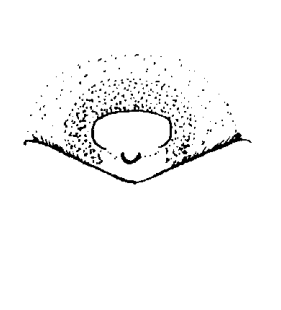Kaestneria torrentum (Kulczyński, 1882)
Beschreibung
Embolus kurz. Epigyne mit querovaler Grube. Prosoma gelblich-braun, Rand verdunkelt. Sternum schmutzig gelb. Cheliceren an Klauenfurchenrand mit kleinen Zähnchen in variabler Anzahl. Beine gelbbraun. Metatarsus meist schwärzlich. Opisthosoma dunkelgrau, selten dorsal mit helleren Winkelflecken.
Körperlänge Männchen: 2-2.5 mmKörperlänge Weibchen: 2-2.5 mm
Zusätzliche Informationen
Unter Steinen, die vom Wasser überrieselt werden, in sehr feuchten Schluchten bis 1200 m, Karpaten
Merkmalsliste Linyphiidenschlüssel
Verbreitung
Phänologie
| Jan | Feb | Mar | Apr | May | Jun | Jul | Aug | Sep | Oct | Nov | Dec |
 |  |
Verbreitungsnachweise
"No reference" bedeutet nicht, dass die Art in diesem Land nicht vorkommt, sondern dass wir die Referenz hierfür noch nicht eingefügt haben. Wir arbeiten daran.
Literatur
Gnelitsa V A (2004b) [Preliminary data on spiders of the family Linyphiidae of the Vyzhnitsky National Nature Park (Carpathians, Ukraine)]. Nature Reserves in Ukraine 10: 86-89 ![]()
Heimer S, Nentwig W (1991) Spinnen Mitteleuropas. Paul Parey Berlin ![]()
Hirna A, Gnelitsa V, Zhukovets E (2016) A checklist of the spiders (Araneae) of the Chornohora Mountain massif (Ukrainian Carpathians). Arachnologische Mitteilungen 51: 16-38 ![]()
Rozwałka R, Stanska M (2008) Check-list of spiders (Araneae) of Poland. 1. December 2008. online at http://www.arachnologia.edu.pl/en/species/8-spiders-of-poland.html ![]()
Růžička V, Řezáč M (2022a) Seznam pavouků České republiky. List of spiders of the Czech Republic. Online at https://www.arachnology.cz/seznam-pavouku-cr-26.html and https://www.arachnology.cz/en/seznam-pavouku-cr-26.html ![]()
WSC (2024) World Spider Catalog. Version 25.0. Natural History Museum Bern, online at http://wsc.nmbe.ch (22.01.2024) doi: 10.24436/2 ![]()

